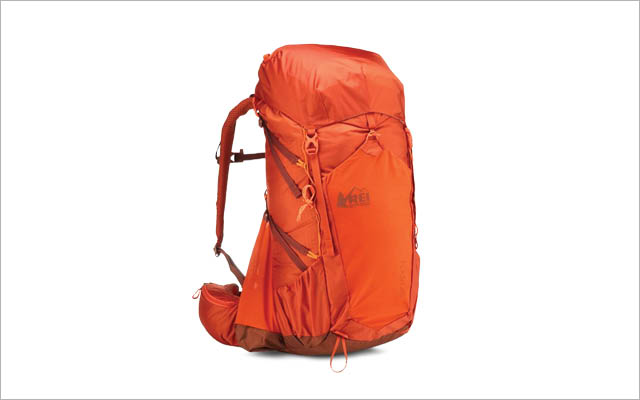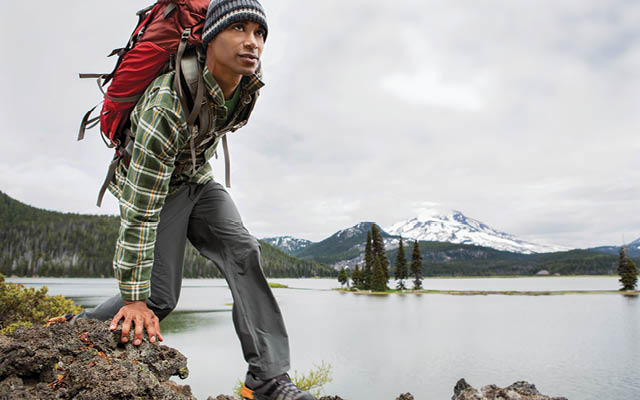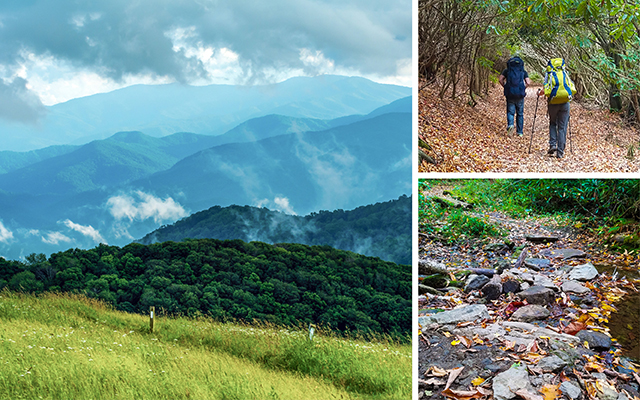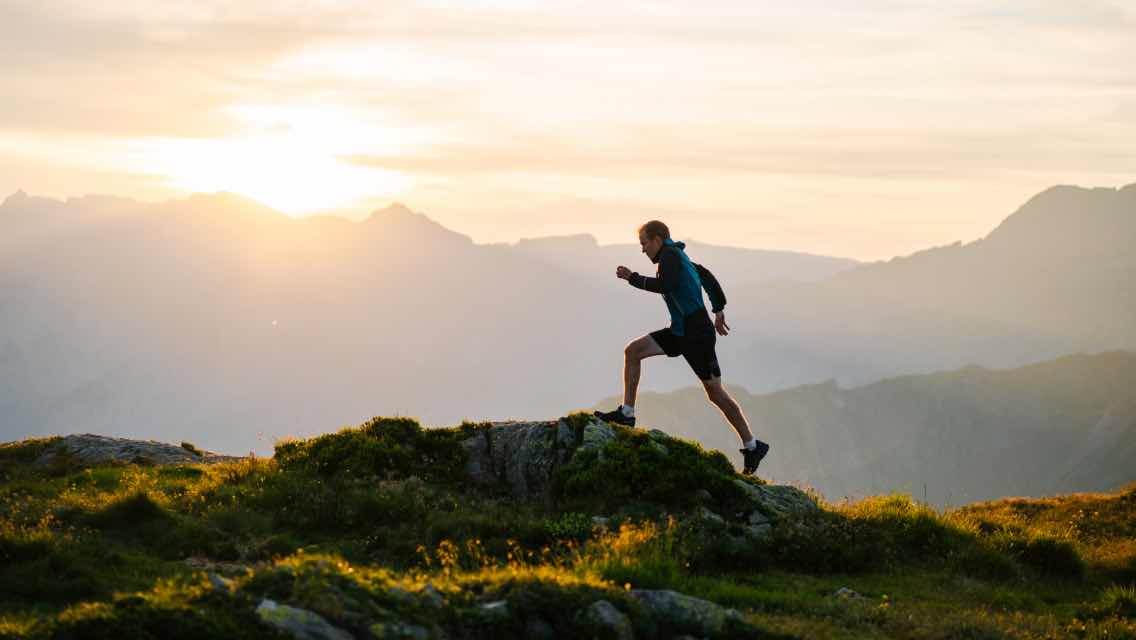Feeling the earth under your feet and the breeze against your face. Smelling plants and trees. Hearing the bugs and birds and other wildlife. Hiking is an activity that engages all of your senses, while also providing a range of ways to challenge yourself mentally and physically.
A hike can be defined as a long walk in nature or wilderness. But it doesn’t really need a definition — it can be whatever you want it to be.
Maybe it’s a walk in the woods, traversing a coastline, summiting a mountain peak, or simply exploring a natural area in your neighborhood. The path can be flat or rugged. It can be straight and narrow, winding, or circular. It can lead you into the unknown or simply help you connect with an unseen part of yourself.
It’s also an activity that can be adapted to nearly every fitness and skill level.
“Hiking is a workout that you can make as easy or difficult as you want based on how your body feels on any given day,” says physical therapist, coach, and avid hiker John Corbo, DPT, SCS, CSCS.
As you gain experience, you’ll be able to hike farther, higher, and faster. You might consider trying new terrain or venturing out on a solo hike. Perhaps you’ll even choose to thru-hike a national or international trail. Each new variable, no matter how large or small, changes the experience and can level-up your adventure.
The options can seem overwhelming. But coach Courtenay Schurman, MS, CSCS, author of The Outdoor Athlete, suggests simplifying the intent of your next trek: “Figure out what engages your creativity and your passion, what makes you excited, and make that your goal.”
Although hiking is fairly accessible and low maintenance, requiring little equipment, it’s important to consider possible pitfalls. Any long walk in nature requires strength, stamina, self-awareness, and a heightened sense of the world around you.
The following tips and tricks will help you safely take on your next trail.
Technique Tips & Drills
In the Gym
“Strength is the foundation of how we move,” says Corbo. “So if you work to build strength, you will also see benefits in endurance, balance, and power.”
He suggests simple resistance training to support your hiking: The following circuit will keep your glutes, quads, and calves ready for your next adventure. Start with one set of 30 reps of each exercise, and work up to two sets of 40 reps over time.
Aim for a rate of perceived exertion of 7 to 8 on a scale of 10 (10 meaning you can’t do another rep). If it’s too easy, add reps or weight.
Step-Ups: Concentrate on remaining strong through the entire motion; don’t use your straight leg to push off from the ground. Initiate the movement from the quad on your bent leg.
T-Reach: Stand on one leg, arms overhead, and bend forward at the hips while raising your nonstanding leg straight behind you, so your body makes a “T” shape. Focus on remaining strong in your standing leg.
Bridge: Lie on your back with your knees bent and your feet close to your body. Pushing through your heels and concentrating on your glutes, raise your torso off the ground as far as you can using just your glutes. Don’t go so far that you start to arch your lower back — keep the work in your glutes.
Calf Raise on Step: Standing with your toes and the balls of your feet on a step, rise up onto your toes and then lower yourself until your heels are just below the top of the step.
On the Trail
Start with the end goal in mind. Schurman suggests thinking about what you want to achieve and then developing a plan for getting there. Do you want to be prepared to take an occasional short-distance hike? Are you tackling a more regular routine, such as the 52-Hike Challenge, in which participants aim to complete one hike per week over the course of a year?
Do you want to prepare for a single long hike, like the 27-mile Grand Traverse in northern Minnesota? Are you eyeing a multiday trek at elevation, such as hiking the Andes to reach Machu Picchu? Or do you aspire to complete a thru-hike along the Pacific Crest, Appalachian, Superior Hiking, or other trail?
Each goal requires a different level of physical preparedness. Whatever you choose, keep the “10 percent rule” in mind, says Schurman. “The body needs gradual ramping up,” she explains, so aim to add no more than 10 percent to your mileage or pack-weight each week.
Pay attention. When hiking, you are awash in information inside and around you. Most accidents occur after an accumulation of ignored warning signs, Schurman notes.
Attend to subtle signals from your body (digestive upset, excess thirst, stiffness, pain) or the environment (changing weather or deteriorating trail conditions) that might indicate danger — and a reason to call it a day.
Use rest stops. While refreshing yourself with food and water, you can also use these opportunities to stretch, check in with your body and your environment, address any issues that are arising (such as hot spots on your skin), and center yourself.
Recover actively. In at least one regard, hiking is similar to any other sport: Work hard, recover harder. Schurman suggests paying special attention to nutrition and hydration; soaking in a hot tub or sweating in a sauna; doing yoga; grounding yourself by walking outside barefoot; or honing your attention through meditation.
Be respectful. It can be easy to think of a hike as “my hike” — your experience and your achievement. But paying attention to yourself and the environment includes awareness of how you are relating to the land.
One rule of thumb is to leave no trace: Pack all your garbage out with you and don’t deface nature, including carving your initials into a tree or rock. Ask yourself if you need to pick all the wildflowers you find, or if you need to stack rocks to build a cairn, which is traditionally meant to serve as a memorial or landmark.
Likewise, learn about the significance of the land you’re traversing: Who are the Indigenous people who call (or once called) this their home? What do they call this land — even this particular trail? What do they value about it? Being mindful of the natural, human, and historical contexts of a place can imbue your own experience with even more meaning and a fuller sense of connection.|
Gear Essentials
GARMIN FENIX 5X SAPPHIRE GPS WATCH:

Navigation is essential in the wild. A GPS-enabled watch allows you to plan routes and send your location to loved ones. $600 from www.buy.garmin.com.
REI CO-OP FLASH 45 PACK:

When choosing a pack, make sure most of the weight is carried on your hips, and that it’s evenly distributed throughout. $160 from www.rei.com.
BLACK DIAMOND TRAIL BACK TREKKING POLES:

Adjustable poles can be tailored to suit the terrain. Shock absorbers reduce stress on your hands and shoulders. $80 from www.blackdiamondequipment.com.
This originally appeared as “Hiking Rocks!” in the October 2020 print issue of Experience Life.




This Post Has 0 Comments